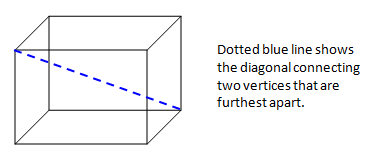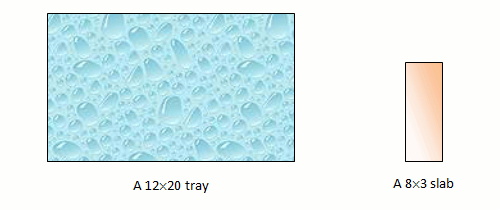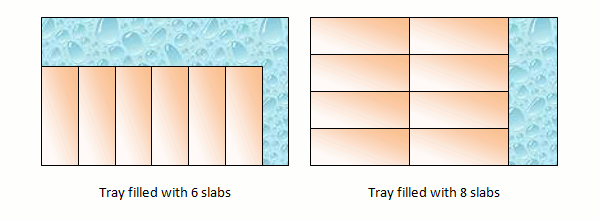Lab #1: Three Simple Exercises
CS1010 AY2017/8 Semester 1
Date of release: 28 August 2017, Monday, 8am.
Submission deadline: 6 September 2017, Wednesday, 5pm.
School of Computing, National University of Singapore
0 Introduction
Important: Please read
Lab Guidelines before you continue.
This lab requires you to do 3 simple exercises.
You may assume that the input data are according to specification, and hence
there is no need to do input data validation, unless otherwise stated.
The maximum number of submissions for each exercise is 15.
If you have any questions on the task statements, you may post your queries
on the
relevant IVLE discussion forum. However, do not post
your programs (partial or complete) on the forum before the deadline!
1 Exercise 1: Investment
1.1 Learning objectives
- Reading input (scanf) and writing output (printf).
- Using data types: int and float.
- Using format specifier in output.
- Simple arithmetic computation.
- Using math function.
1.2 Task statement
If you invest principal amount of money (in dollars) at
rate percent interest rate compounded annually, in numYears years,
your investment will grow to
principal × ( 1 - (rate/100)numYears+1 )
1 - rate/100
dollars.
Write a program invest.c that accepts positive integers
principal, rate and numYears and computes the amount of money
(of type float) earned after numYears years, presented in
two decimal places.
You may assume that the interest rate is always smaller than 100.
1.3 Sample runs
Sample run using interactive input (user's input shown in
blue; output shown in
bold purple).
Sample run #1:
Enter principal amount: 100
Enter interest rate : 10
Enter number of years : 5
Amount = $111.11
Sample run #2:
Enter principal amount: 20000
Enter interest rate : 5
Enter number of years : 10
Amount = $21052.63
1.4 Skeleton program and Test data
1.5 Important notes
- Do you remember to include the correct header files?
- If your program cannot be compiled, have you forgotten a certain compiler option?
- Print out the computed amount correct to 2 decimal places.
- CodeCrunch awards mark for correctness ONLY if your output adheres to
the given format. Hence, do not add any other characters (even blanks)
that are not asked for in your output, or change the spelling of
words in your output. The following outputs are all considered
incorrect:
- amount = $111.11 (reason: "Amount" misspelt as "amount")
- Amount=$111.11 (reason: spaces around the = sign are missing)
- Amount = $111.11 (reason: additional spaces before "Amount")
- Amount = $111.11 (reason: too many spaces around the = sign)
- Amount = 111.11 (reason: missing $ sign)
- Amount = $111.11. (reason: additional dot at end of line)
- The skeleton program provided contains a few printf() statements, which
you should not change, or your output will not be the same as the
require one.
- Also remember to have a newline character (\n) in the last line of output of
your program.
1.6 Estimated development time
The time here is an estimate of how much time we expect you to
spend on this exercise. If you need to spend way more time than
this, it is an indication that some help might be needed.
- Devising and writing the algorithm (pseudo-code): 5 minutes
- Translating pseudo-code into code: 5 minutes
- Typing in the code: 5 minutes
- Testing and debugging: 15 minutes
- Total: 30 minutes
2 Exercise 2: Box Surface Area and Diagonal
2.1 Learning objectives
- Reading input (scanf) and writing output (printf).
- Using data types: int and double.
- Using format specifier in output.
- Simple arithmetic computation.
- Using math function.
- Writing your own user-defined functions.
2.2 Task statement
Write a program box.c that reads three positive integers
representing the length, width and height of a box, and computes (1)
its surface area, and (2) the length of the diagonal
between two vertices of the box that are furthest apart.

You may assume that the surface area of the box does not exceed the
maximum value representable in the int data type.
Hint: Do you know the formula for computing the length of the diagonal?
2.3 Sample runs
Sample run using interactive input (user's input shown in
blue; output shown in
bold purple).
Sample run #1:
Enter length: 12
Enter width : 3
Enter height: 10
Surface area = 372
Diagonal = 15.91
Sample run #2:
Enter length: 10
Enter width : 20
Enter height: 30
Surface area = 2200
Diagonal = 37.42
2.4 Skeleton program and Test data
2.5 Important notes
- Write two functions: compute_surface_area() and
compute_diagonal() to compute the surface area and length
of diagonal of the box respectively. You are to determine what
parameters to include for the functions.
- Do not use global variables. Global variables are variables
that are declared outside all functions. Use of global variables will
incur a big penalty.
- In writing functions, we would like you to include function
prototypes before the main() function, and the function definitions
after the main() function.
- The diagonal should be of double type.
- If your program cannot be compiled, have you forgotten a certain compiler
option?
- Did you give descriptive names to your variables?
Giving single-letter variable names (such as l, w, h) will incur some
penalty.
2.6 Estimated development time
The time here is an estimate of how much time we expect you to
spend on this exercise. If you need to spend way more time than
this, it is an indication that some help might be needed.
- Devising and writing the algorithm (pseudo-code): 5 minutes
- Translating pseudo-code into code: 10 minutes
- Typing in the code: 10 minutes (most of the code is already given
in the skeleton program)
- Testing and debugging: 20 minutes
- Total: 45 minutes
3 Exercise 3: Packing
3.1 Learning objectives
- Reading input (scanf) and writing output (printf).
- Using data type: int.
- Simple arithmetic computation.
- Writing function.
- Using selection statement.
- Simple problem solving.
3.2 Task statement
You are given a rectangle tray and an unlimited supply of
slabs. An example of a 12×20 tray and a 8×3 slab
are shown below.

You are to find the maximum number of slabs that can be packed into
the tray. The slabs may be packed in either one of the two orientations,
as shown below, but not in a mix of orientations.

The figures above show that the tray may be filled with 6 slabs arranged
in one orientation, or 8 slabs arranged in the other orientation. Hence, the
answer is 8.
You are to write a program packing.c to read in the dimensions
of a tray and a slab, and to compute the maximum possible number of
slabs that could be packed onto the tray.
You may assume that all inputs are positive integers.
3.3 Sample runs
Sample run using interactive input (user's input shown in
blue; output shown in
bold purple).
Sample run #1:
Enter dimension of tray: 12 20
Enter dimension of slab: 8 3
Maximum number of slabs = 8
Sample run #2:
Enter dimension of tray: 60 35
Enter dimension of slab: 6 8
Maximum number of slabs = 40
3.4 Skeleton program and Test data
3.5 Important notes
- Write a function compute_max_slabs() to compute
the maximum number of slabs that can be packed onto the tray.
You may write other supporting functions if necessary.
- In writing functions, we would like you to include function
prototypes before the main() function, and the function definitions
after the main() function.
3.6 Estimated development time
The time here is an estimate of how much time we expect you to
spend on this exercise. If you need to spend way more time than
this, it is an indication that some help might be needed.
- Devising and writing the algorithm (pseudo-code): 40 minutes
- Translating pseudo-code into code: 15 minutes
- Typing in the code: 15 minutes
- Testing and debugging: 30 minutes
- Total: 100 minutes
3.7 Exploration
Here are some possible extensions of the problem for you to try
on your own. You do NOT need to submit them.
- If we allow mixing of orientations for the slabs, we can
pack more slabs onto the tray. For the above example, we
can pack 9 slabs.
- If we extend the problem to 3 dimensions, where the
tray becomes a box, and the slabs become blocks, the
problem would become more challenging (and beyond the
scope of this module). Try it out nonetheless, to appreciate
how much more complicated it becomes compared to the original
problem.
4 Deadline
The deadline for submitting all programs is 6 September 2017, Wednesday, 5pm.
Late submission will NOT be accepted.
Last updated: 26 August 2017



